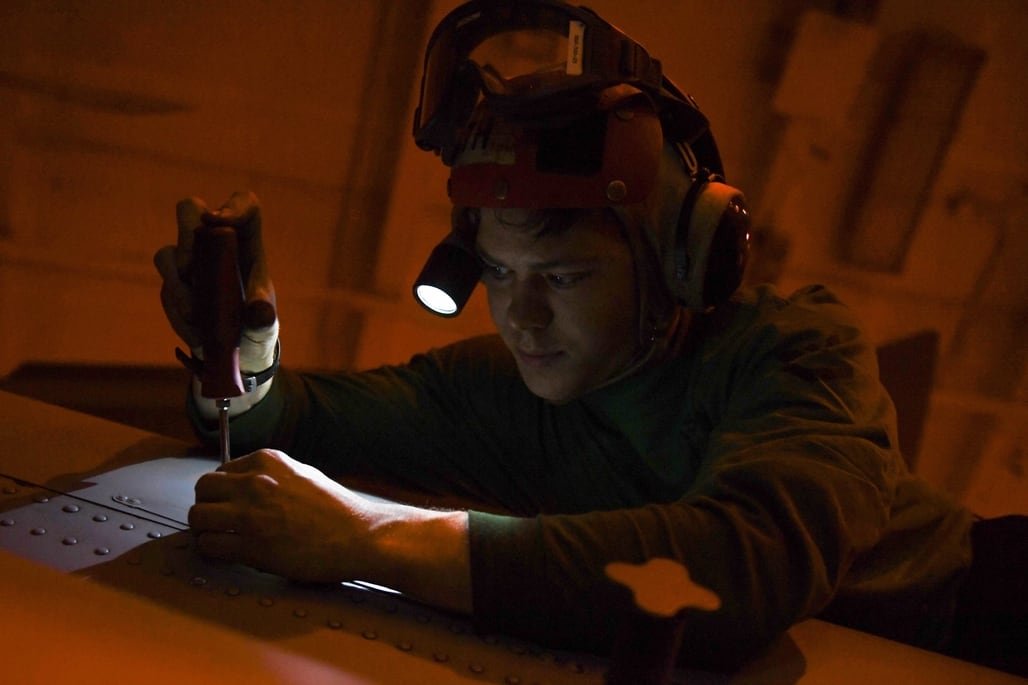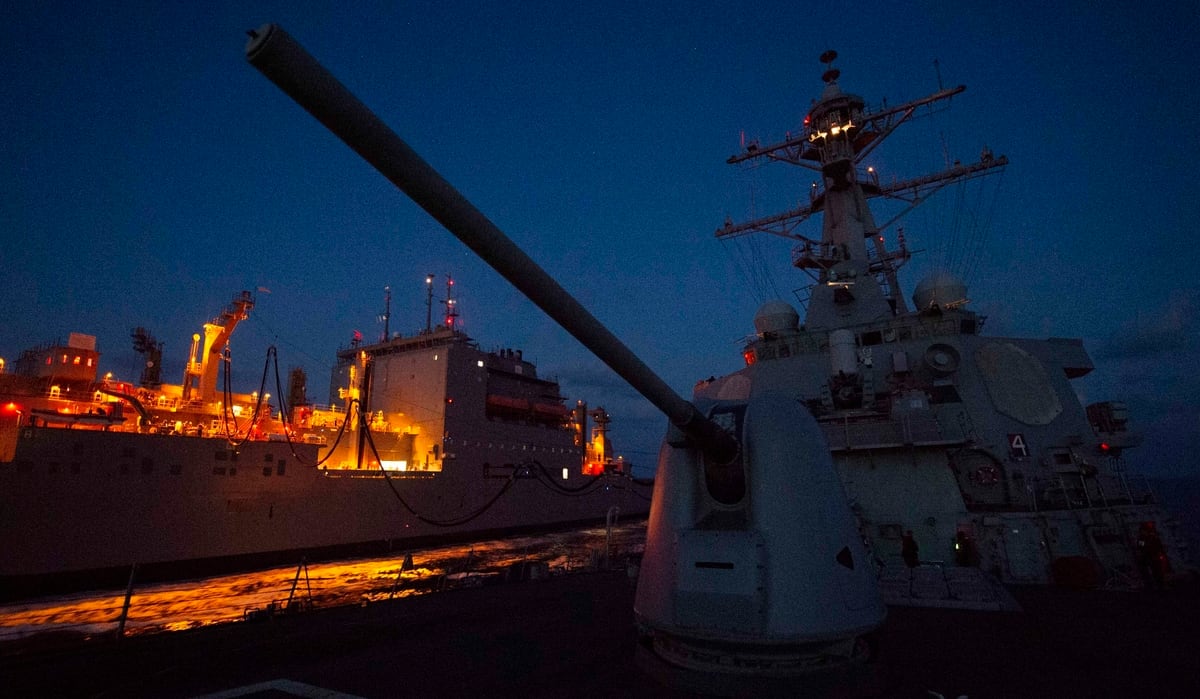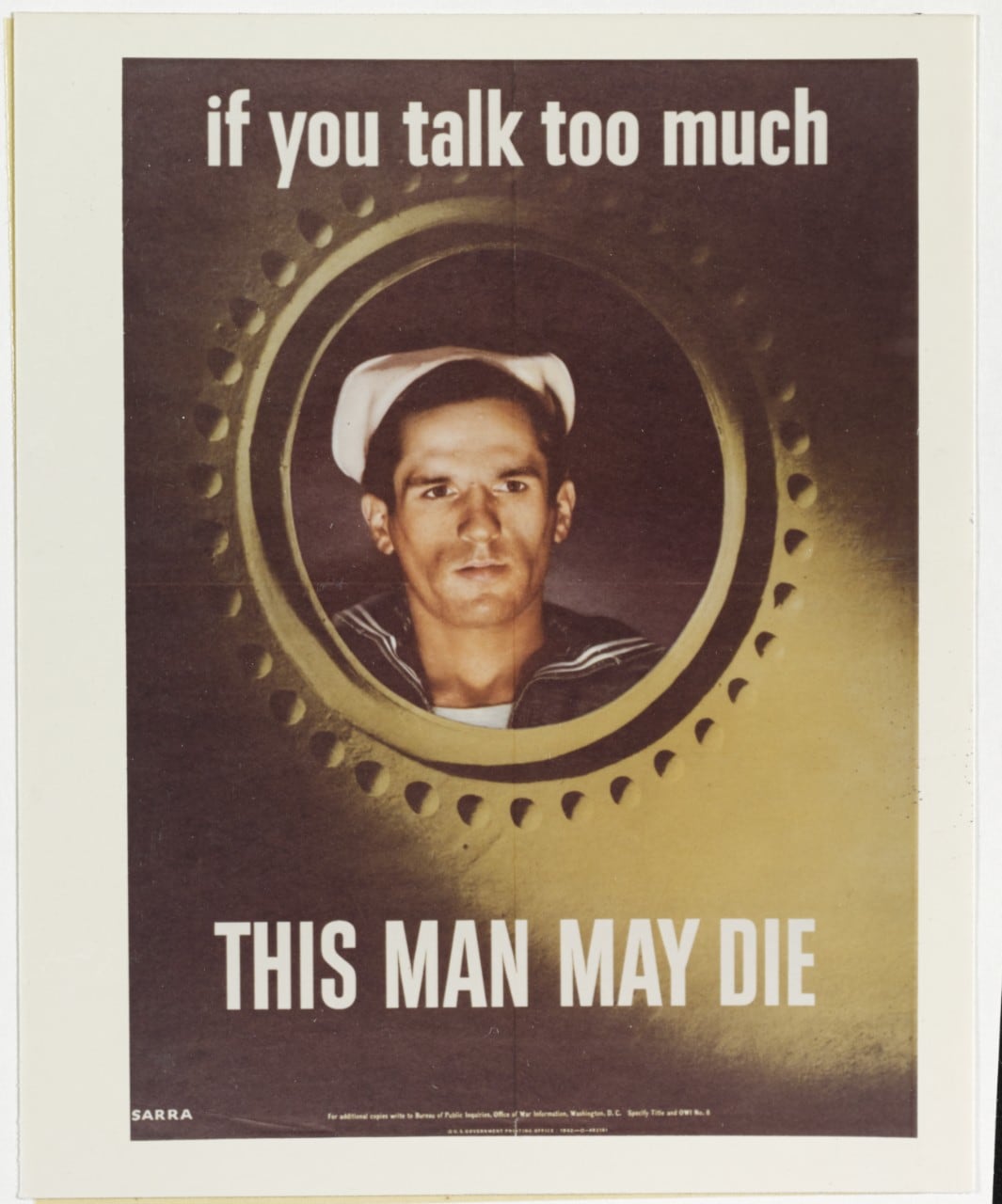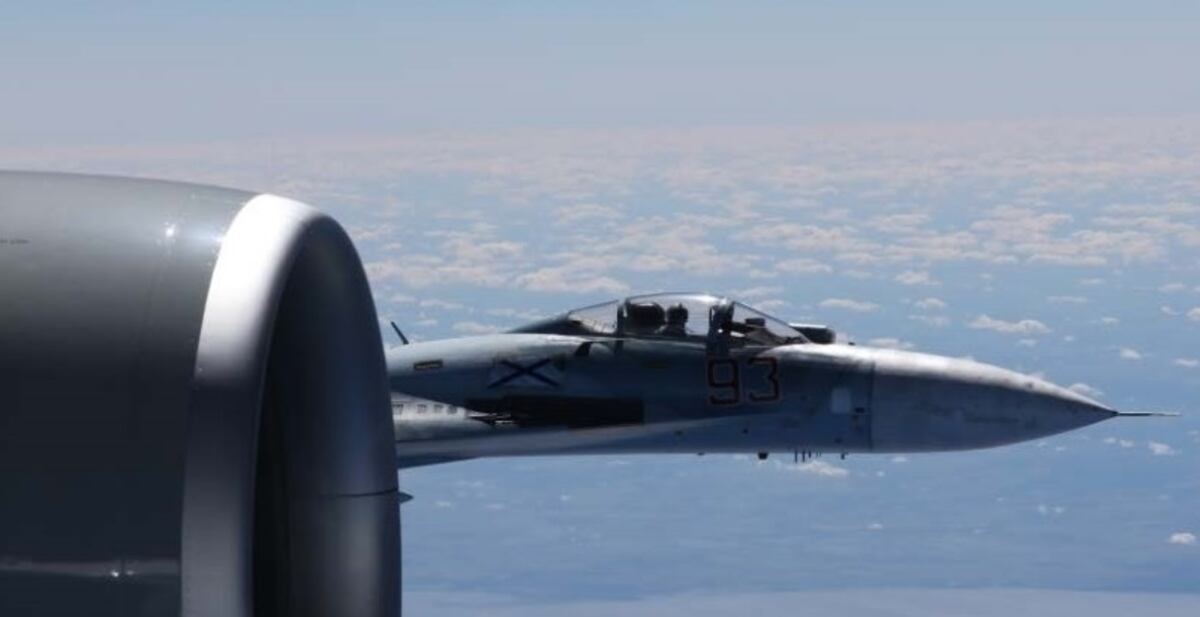The Navy’s highest ranking officer and his top enlisted sailor spent their Thanksgiving aboard the aircraft carrier Harry S. Truman, sailing the Mediterranean Sea.
Their take: The Truman Carrier Strike Group’s ongoing Dynamic Force Employment experiment has been a great success, assuring allies that they’ll show up to defend them and teaching potential foes that the Navy can show up suddenly with dominant firepower.
“I gotta say, from my perspective, this is going magnificently,” said Adm. John Richardson, the Chief of Naval Operations, during a Thanksgiving conference call with Navy Times and the U.S. Naval Institute. “We laid out some very challenging goals for ourselves in terms of this deployment.
“I’d say that the Navy, by its nature, is predisposed to being dynamic and moving around. And it’s really good to kinda get back into that game a little bit in response to changes in the dynamics of great power competition.”

The Truman Carrier Strike Group has been in the spotlight because Secretary of Defense Jim Mattis wanted unpredictable flattop deployments and the retired Marine four-star general is getting his wish.
Seven-month carrier tours had become routine but the Truman mixed that up. The strike group departed Norfolk on April 11, just a year and nine months after returning from a record-setting deployment bombing the Islamic State in the Middle East.
The Truman and its escorts the guided-missile cruiser Normandy and destroyers Arleigh Burke and Forrest Sherman returned to Virginia on July 21 for what officials cautioned families was an “extended port visit,” not a homecoming.
They left on Aug. 28 for a rendezvous in the Atlantic with sister carrier Abraham Lincoln before continuing on to NATO’s massive Trident Juncture exercises, a show of force that reminded Russia that America and its allies can put troops ashore and munitions on target if necessary.
Flanked by Master Chief Petty Officer of the Navy Russell L. Smith, Carrier Strike Group commander Rear Adm. Gene Black and Capt. Nicholas J. Dienna, the skipper of the Truman, Richardson said that they achieved “every goal” for a cruise that operated from the North Atlantic to above the Arctic Circle and across the Mediterranean Sea.
The warships practiced hunting submarines, interdicting enemy aircraft and patrolling alongside friends from Europe and North Africa, sometimes in tough conditions. It was the first time in a quarter-century since a carrier strike group roamed inside the Arctic Circle, officials added.
“It’s worth noting that in almost two months in heavy seas, I had no sailors injured by equipment or anything like that,” said Rear Adm. Black. “And that talks to the quality of the leadership, from the junior officers and the chief petty officers all the way down who checked and double-checked and bought into the challenges that came with operating in such a dynamic environment.”
“It’s an operator’s dream,” added Black. “You get to show up and you get to do things with NATO partners and allies that we haven’t been able to do at the high end, to the same extent. It’s an absolute thrill and I see far more opportunities than challenges.”

To Adm. Richardson, who has raised concerns about the increasing Russian presence in the North Atlantic, the new tours are all “back to the future.” When he chatted with previous CNOs about returning to the unpredictable style of Cold War deployments, they told him, “‘Well, what else have you been doing? This is what we do in the Navy,'" he recalled.
Operating in cold weather and heavy sea states, arranging for logistics in Arctic waters — those are old lessons that younger officers and their crews must relearn, Richardson said.
Capt. Dienna pointed to an old Navy Arctic operations manual his crew discovered.
“There was a list of snow and ice removal equipment that each ship should be equipped with,” he said. “And No. 1 on that list was ’48 baseball bats.' So we outfitted ourselves with 48 Louisville Sluggers and some additional equipment.”
While few sailors on the carrier might’ve had direct experience with sailing in northern waters, Dienna said they still could draw on a massive body of knowledge and a wide range of expertise within the Navy itself.
“It’s a matter of recapturing those lessons, continuing to learn rapidly and relevantly and moving forward,” he said. “And I think that was one of our greatest successes.”
CNO Richardson said pledged to provide the fuel, equipment and everything else necessary to keep the strike group is “up on our game.”

But to MCPON Smith, the wealth of knowledge available to sailors today with a few clicks on a keyboard is helpful, but the same networked and global reach of technology can ruin the element of surprise if sailors and their families aren’t careful.
“In 1991, we didn’t have the information ubiquity that we have now with the internet," said Smith. "Everyone is talking OPSEC, which meant a lot to us in World War II — think about the posters with ‘Loose Lips Sink Ships’ that now could be ‘Loose Tweets Sink Fleets.'
“Strike groups must have the ability to maintain some sort of disguise as far as what they’re doing and where they’re going and how we’re telegraphing our moves — that can be an even more challenging environment. And getting our sailors on board is going to be one of the bigger challenges we face.”
Rear Adm. Black agreed, pointing to an “OPSEC stand down” that rehearsed how sailors and their families wouldn’t broadcast carrier operations. But that sort of secrecy won’t drape the return of the warships.
“This time we’ll have the whole homecoming, with Santa Claus and the band and the radio station and all the good stuff that comes with that,” he said.
But in keeping with the new dynamic deployment rotations, the toil of the more than 7,000 sailors in the strike group doesn’t end in Norfolk.
Rear Adm. Black said that the group will enter their sustainment phase — maintenance, exercises at sea and staying ready to deploy quickly if CNO alerts them to go.
RELATED

On Nov. 5 a Russian fighter on the other side of Europe from the Truman Carrier Strike Group intercepted a Navy EP-3E Aries II reconnaissance aircraft in international airspace over the Black Sea.
Pentagon officials blasted the videotaped incident, which included the Russian Sukhoi Su-27 “Flanker” pilot dangerously buzzing the Navy plane before applying his afterburners, forcing the turbo-prop American aircraft to fly through his flight wash.
But Capt. Dienna pointed to “numerous” interactions with Russian aircraft during the Truman’s tour as “absolutely professional" and “in accordance with all of our agreements.”
Prine came to Navy Times after stints at the San Diego Union-Tribune and Pittsburgh Tribune-Review. He served in the Marine Corps and the Pennsylvania Army National Guard. His awards include the Joseph Galloway Award for Distinguished Reporting on the military, a first prize from Investigative Reporters & Editors and the Combat Infantryman Badge.




